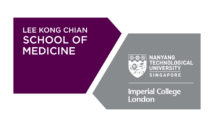[Journal article] Identifying clusters of healthcare expenditure trajectories in end-stage organ disease: a retrospective cohort study using linked administrative databases in Singapore
24 Oct 2025
Authors: Sheryl Hui-Xian Ng, Palvinder Kaur, Laurence Lean Chin Tan, Ri Yin Tay, Mervyn Yong Hwang Koh, Andy Hau Yan Ho, Allyn Hum & Woan Shin Tan
Published in: BMC Health Services Research. Published online: 22 Oct 2025. DOI: https://doi.org/10.1186/s12913-025-13590-z
Summary points:
- Decedents who had end-stage organ disease could be split into three subgroups based on their healthcare utilization patterns in the final five years of life – low cost throughout, as well as moderately high costs (MC) and escalating costs (EC) at the end of life, differentiated by extent of inpatient and intensive care use.
- Patients with multiple ESODs or a history of stroke were more likely to have a MC trajectory, while patients who were younger or had respiratory failure were more likely to have a EC trajectory.
- In the final three months of life, most ESOD patients had an ED attendance and had late or no access to palliative care, highlighting the pertinence of increasing access to goals-of-care conversations and palliative care for this group.




